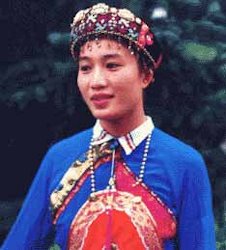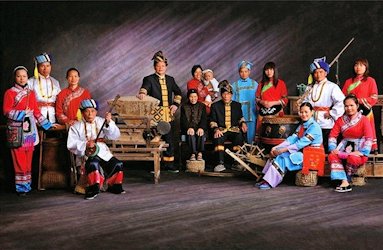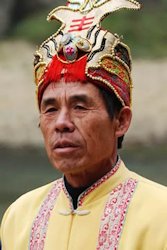|
34. Chinese Nationalities (Mulao Minority) -- Minorities by Alphabetic Sequence |
||

|

|

|
| Mulao Lady | Mulao Group | Mulao Gentleman |
|
Mulao Minority The Mulao (own name: Mulao) people are an ethnic group. They form one of the 56 ethnic groups officially recognized by the People's Republic of China. In their name, Mulao, "mu" is a classifier for human beings and "lam" is another form of the name used by the Dong (Kam), to whom the Mulao people are ethnically related. A large portion of the Mulao in Guangxi live in Luocheng Mulao Autonomous County of Hechi, Guangxi Autonomous Region. The Mulao are an agricultural people with a self-sufficient village economy. Religions include Buddhism and Daoism. The Mulao language is related to that of the Dong and Chinese characters are used. It is believed that the Mulao are the descendants of the ancient Ling and Liao tribes that inhabited the region during the time of the Jin Dynasty. During the Yuan dynasty, the Mulao lived in a feudal society and they paid a series of tributes twice a year to the emperor. During the Qing Dynasty, their territories suffered an administrative division; their lands were divided into dongs, which were composed of units for 10 dwellings. Each dong had its own local leader, responsible for maintaining the order and of collecting the taxes. Each dong was generally formed by families that shared the same surname. Traditionally, the marriages among the Mulao were arranged by the parents and traditionally, new wives did not live together with their new husbands until the birth of their first son. Their homes are made out of clay with brick roofs and are composed of three rooms. The animals are maintained far away of the family dwellings. The traditional clothing of the men consists of a jacket of large buttons, wide pants and sandals. The single women arranged their hair into two tresses that become a tuft when they are married. |
||
| Return to Alphabetic List On to No. 35 Minority Naxi ⇨ | ||